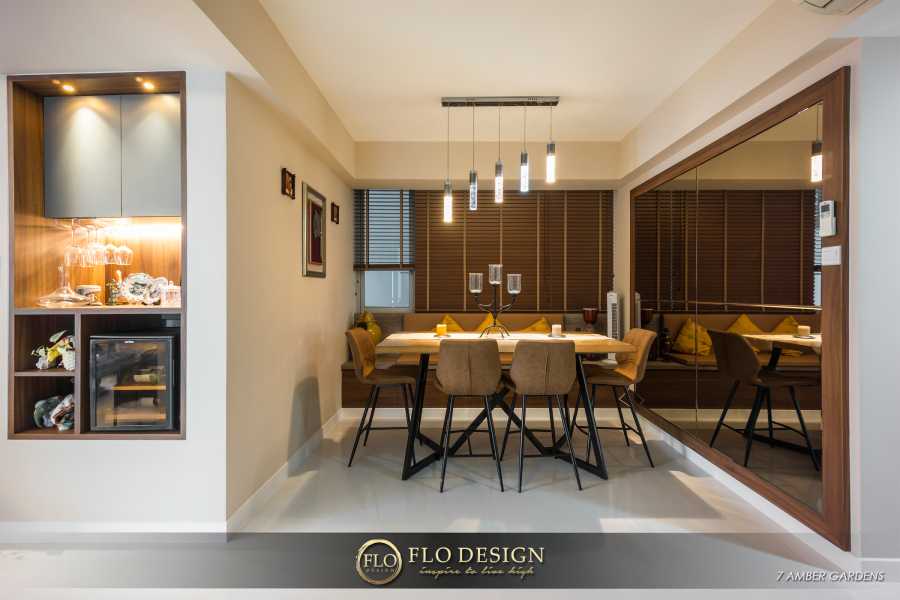
Interior design is a reflection of our tastes, lifestyles, and evolving trends. Two styles that often get intertwined are modern and contemporary design.
While they share similarities, understanding their nuances can help you distinguish between the two and create spaces that truly resonate with your aesthetic preferences. In this article, we delve into the fundamental disparities between modern and contemporary interior design.
Defining Modern Interior Design
Modern interior design refers to a specific period in design history, primarily the early to mid-20th century, characterised by clean lines, minimalism, and a focus on form and functionality. Instead of ornamentation, modernists advocated for sleek, unardorned spaces.
Understanding Contemporary Interior Design
Contemporary interior design, on the other hand, became popular in the 1970s and is rooted in the present moment. Unlike modern design, which refers to a specific historical period, contemporary design is ever-evolving and reflects current trends and sensibilities. It borrows elements from various styles, making it eclectic and dynamic. Contemporary design is all about what's "in" right now, embracing innovation, experimentation, and individuality.
Flexibility is a hallmark of contemporary interiors, allowing for a blend of different aesthetics and influences. While modern design tends to be more rigid and uniform, contemporary spaces are characterised by a sense of fluidity and adaptability. This style encourages creativity and personal expression, inviting individuals to curate spaces that reflect their unique personalities and preferences.
Key Differences
- Historical Context: The most significant distinction between modern and contemporary design lies in their historical contexts. Modern design emerged during the early to mid-20th century, whereas contemporary design is a reflection of current trends and tastes.
- Aesthetic Characteristics: Modern interiors feature clean lines, minimalism, and a focus on functionality. In contrast, contemporary spaces embrace a mix of styles, textures, and colors, resulting in a more eclectic and diverse aesthetic.
- Materials and Finishes: Modern design favours natural materials with earthy elements like wood, while contemporary design incorporates more state-of-the-art or industrial-inspired materials like metal, glass, and stone.
- Colour Palette: Modern interiors typically feature neutral color palettes, whereas contemporary spaces typically use black, white, and grey (though other colours are often integrated into the interiors to add vibrancy).
- Furniture and Accessories: Furniture in modern design tends to be sleek and minimalist, with an emphasis on functionality. In contrast, contemporary interiors allow for a mix of furniture styles, from mid-century modern classics to avant-garde pieces, along with eclectic accessories and artwork.
Creating Your Ideal Space
Understanding the differences between modern and contemporary design can help you articulate your preferences and vision when engaging interior design services in Singapore. Whether you're drawn to the clean lines and simplicity of modern design or the eclectic and dynamic nature of contemporary design, it's essential to stay true to your personal style and preferences.
When designing your space, consider the following tips:
- Define Your Style: Take the time to explore different design styles and identify elements that resonate with you. Are you drawn to the clean lines and minimalism of modern design, or do you prefer the eclectic and dynamic nature of contemporary design?
- Mix and Match: Don't be afraid to mix different styles, textures, and materials to create a space that feels uniquely yours. Blend modern furniture with vintage pieces, or juxtapose sleek surfaces with natural materials for added visual interest.
- Consider Functionality: Regardless of style, prioritise functionality and comfort in your design choices. Opt for furniture that not only looks great but also serves its purpose and enhances your daily life.
- Embrace Individuality: Let your personality shine through in your design decisions. Whether it's through artwork, accessories, or personal mementos, infuse your space with elements that reflect who you are and what you love.
Conclusion
While modern and contemporary interior design sometimes overlap, they are distinct styles with unique qualities and influences. By knowing how to distinguish the two and embracing your personal style and preferences, you can create spaces that are not only visually stunning but also reflective of your individuality and lifestyle. Whether you're drawn to the timeless elegance of modern design or the dynamic creativity of contemporary design, the key is to create a space that feels authentically yours.
Create your dream home with Flo Design—we offer condo units, HDB, and landed interior design in Singapore. Reach out to us for more information.




